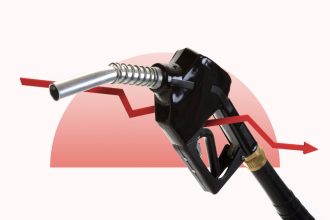A bank statement is an important document that provides a detailed record of all the transactions that occurred in your bank account over a specific period of time, usually a month.
Bank statements allow customers to review all activity on their account, reconcile their balance, spot errors and identify potential fraud. It’s also useful for tracking spending, savings and for creating a budget. Lenders often require bank statements when you apply for a loan, mortgage or rent an apartment. Potential landlords and creditors want to see that you have reliable income and pay your bills on time.
Banks send account statements electronically or via physical mail. Paper statements are becoming less common and banks might charge a fee to customers who want them. Many people view their bank statements using their online bank account or their bank’s mobile app.
What is included in a bank statement?
A typical bank statement contains a wealth of information about your account activity, including:
- Your name, address, and account number.
- The statement period (start and end date).
- Beginning and ending account balances.
- All deposits and credits, such as direct deposits, interest earned, refunds.
- All withdrawals and debits, like ATM withdrawals, debit card purchases, checks paid or online bill payments.
- Transfers in and out of the account.
- Bank fees charged, like overdraft or ATM fees.
- Interest earned or charged (for interest-bearing accounts or credit cards).
- The bank’s contact information and instructions for reporting errors.
Credit card statements also include additional details like your credit limit, available credit, payment due date, minimum payment amount, recent payments and credits, interest charged, and more.
How to get your bank statement
You have a few options for obtaining your bank statements:
Paper statements
Some banks still send monthly paper statements by mail. However, many now charge a fee for this service. Fees can range from $1-$5 per month, sometimes more if you want copies of your cleared checks.
Wells Fargo, for example, charges Everyday Checking account holders $2 a month for images of the front of the checks and $3.50 per month for images of both the front and back of checks.
Electronic statements
Many banks now encourage customers to “go paperless” and access statements electronically. You can typically view and download statements in PDF format through your bank’s website or mobile app. The bank may email you when a new statement is ready.
Mobile apps
Most banks now offer mobile apps and online account access that let you view recent transactions, transfer money, pay bills, and more. While not a replacement for formal statements, these tools provide quick, 24/7 access to your balance and transaction history.
What to look for on a bank statement
When a customer gets their monthly bank statement, there are certain things they should check for.
- Errors and unauthorized transactions. Mistakes happen. Your bank may incorrectly post a transaction or a merchant may charge you twice. Reviewing statements helps you spot and dispute these issues promptly. It’s also an important way to detect signs of fraud or identity theft, such as purchases you don’t recognize.
- Automatic payments. Customers who have bills paid out of their account automatically should double-check payment amounts. It’s easy to lose track of how much is going out when payments are withdrawn automatically, especially if the amount fluctuates. Energy bills are an example of payments that can change every month.
- Direct deposits and other sources of income. Customers who have their paychecks, Social Security checks or other payments directly deposited should make sure they appear on their monthly bank statements. With your income and expenses listed out, you can create a realistic monthly budget. Comparing your statements to your budget each month helps you course-correct as needed and find opportunities to save.
- Spending habits. Bank statements provide a big-picture view of where your money comes from and where it’s going. By categorizing your expenses, you can see which areas, like dining out or subscription services, consume the biggest chunks of your budget. This awareness is key to making changes and working toward financial goals.
- Interest earnings (if any). A monthly bank statement for an interest-bearing account will include interest the customer has earned. If it’s a credit card statement, it will show how much interest the customer is being charged during the billing cycle and total interest charges for the year.
How often should I check my bank statement?
It’s a good idea to check your bank statement every month to identify any potential fraud and keep track of your spending. Set a reminder on your calendar or schedule time after the statement closing date.
You can enroll in electronic statements to save paper and avoid monthly fees, but make sure to save copies to your computer or the cloud regularly. If you spot transactions you don’t recognize, contact your bank immediately.
Bottom line
While many people embrace digital banking these days, regularly reviewing your bank statements never goes out of style. Consider it an essential part of your financial health routine – like an annual checkup for your money. The more intimately you know your finances, the better equipped you are to meet your goals.
Read the full article here














